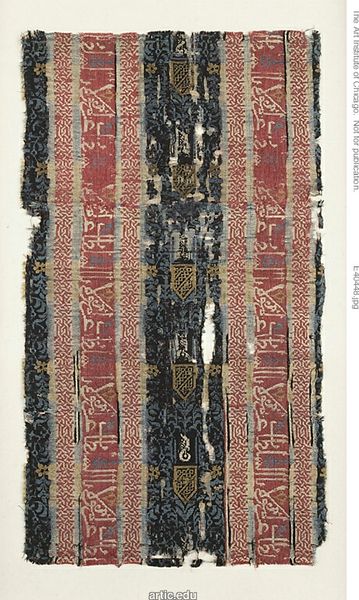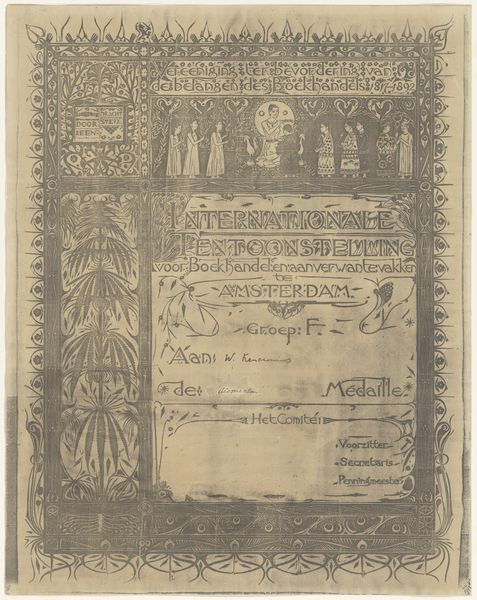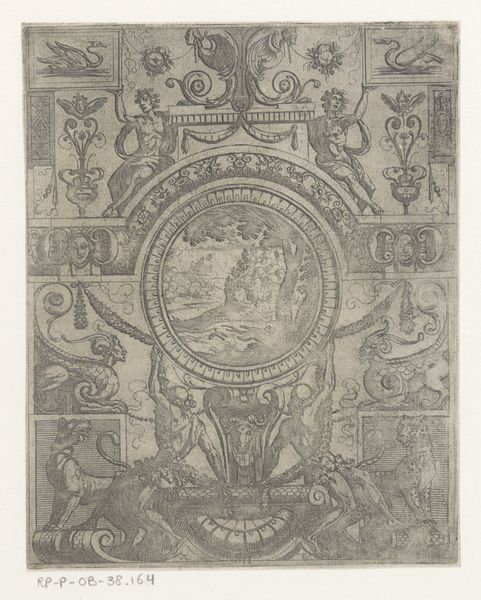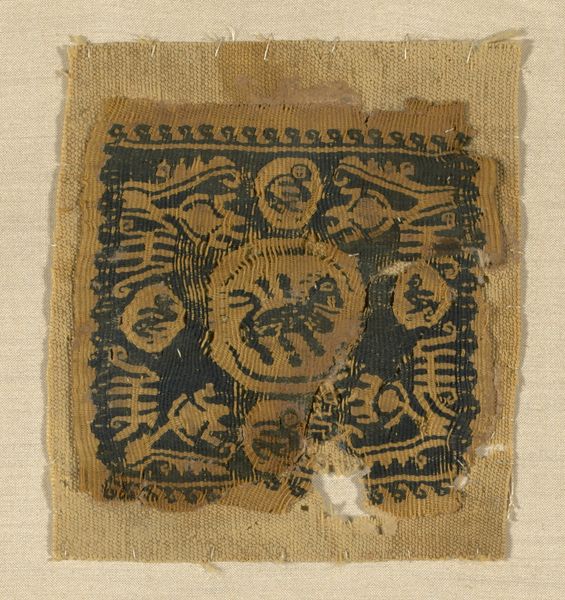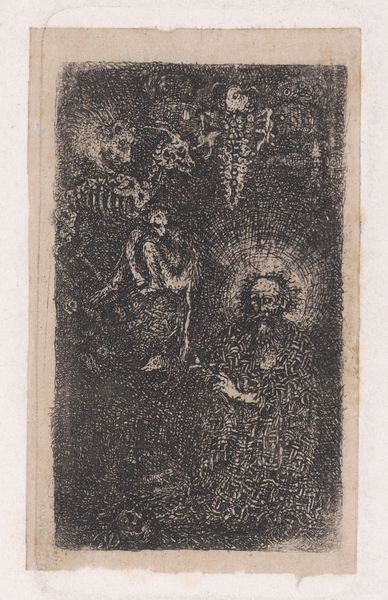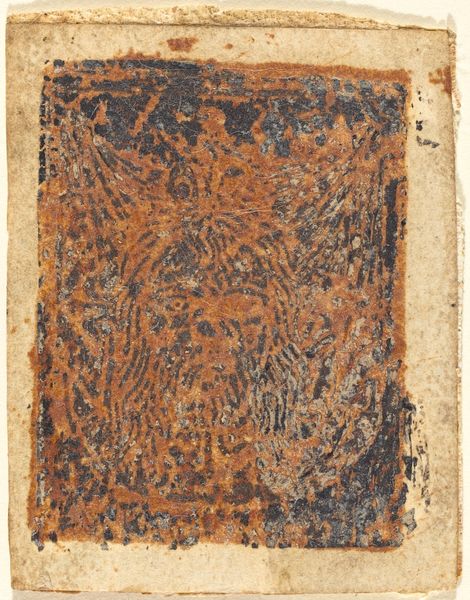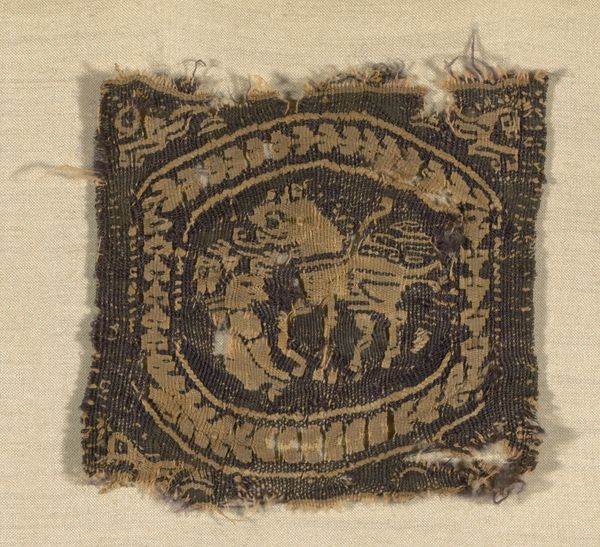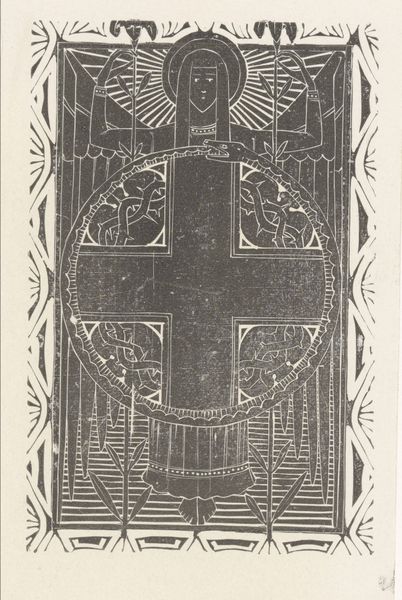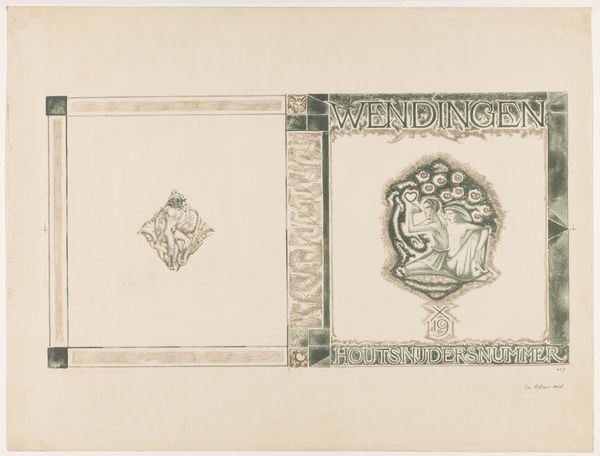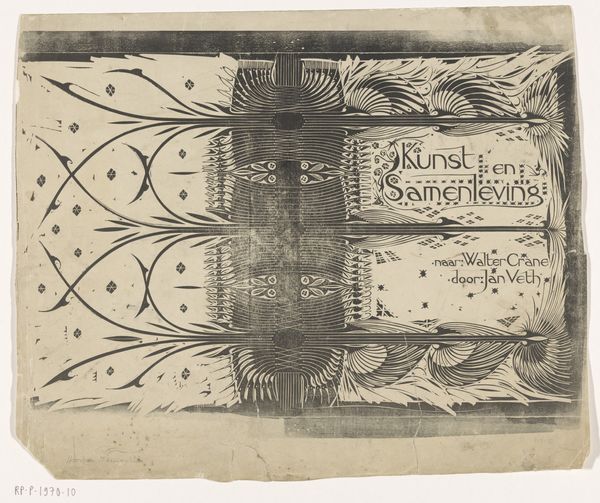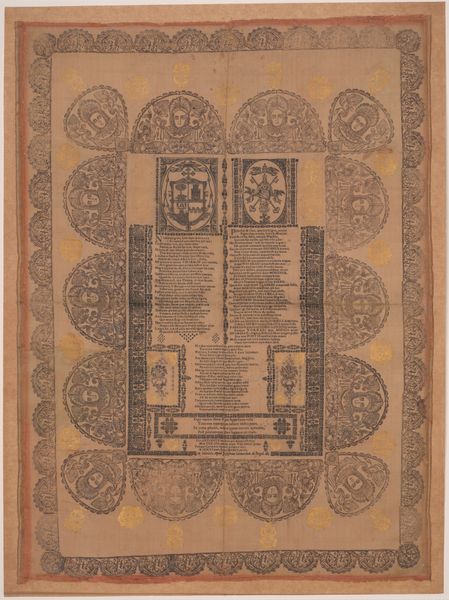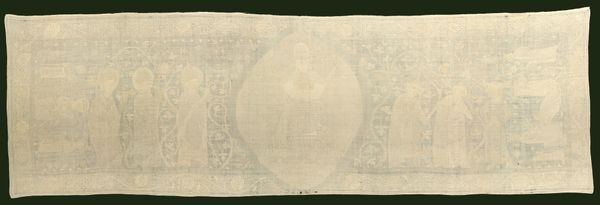
painting, textile, watercolor
#
water colours
#
allegory
#
painting
#
textile
#
mannerism
#
11_renaissance
#
watercolor
#
history-painting
#
watercolor
Dimensions: height 340 cm, width 224 cm
Copyright: Rijks Museum: Open Domain
Curator: Immediately, I’m drawn to the evident fragility. You can almost feel the age and the years of slow decay in the fibres. Editor: Indeed. This object, dating from 1570 to 1630, is cataloged as "Fragment of a Ship Flag". It resides here at the Rijksmuseum. Created by an anonymous artist, it’s an exquisite watercolor and textile piece. Curator: A ship flag, yet so earth-toned and faded. What would have compelled this choice of medium? It's grandeur and authority, rendered on fragile, absorbent cloth, watercolours seeping into fibres...it's about the symbolism isn’t it? What does that imply? Editor: As a materialist, I'm wondering about the labour, the means, of producing such a large piece of textile art. Watercolor as the chosen medium is also curious. I wonder if its apparent 'disappearance' and gentle integration into the cloth alludes to ideas of colonial enterprise as almost ghost-like... a spectre of the age. Curator: It has heraldic symbols, glimpses of crowns, lions, lilies - emblems heavy with the weight of history, dominion and power. These symbols persist. They echo through centuries, carrying meaning. What does that pillar mean to you? 'Plus Ultra,' 'Further Beyond'? Editor: ‘Plus Ultra’, beyond, onwards – the motto associated with Habsburg Spain and the so called 'age of discovery'. Watercolors are transportable, impermanent… perhaps the fragility itself speaks to the transient nature of imperial projects and aspirations, a conscious acknowledgement of inevitable decay in a world dominated by material excess and resource extraction. Curator: So, even in decay, it presents us with something profound, then – the illusion of permanence exposed. The banner might fall but its idea, or more properly its ideas - its ghosts - remain in the cultural landscape. Editor: Right. The flag is the literal artefact that points to those colonial-era industries. I would be intrigued to better know more about the textiles’ origins: Was it locally produced, or an imported luxury, signifying wealth? Curator: Ultimately, viewing “Fragment of a Ship Flag" reveals to us both an artifact of past power, and a ghostly premonition, rendered in delicate colour, reminding us that power and meaning reside long after their initial material conditions disintegrate. Editor: Exactly. I'm now looking beyond the artwork, contemplating all of the various processes and labours required for even just the creation of this now aged piece of textile, stained with pigment from an unknowable past.
Comments
No comments
Be the first to comment and join the conversation on the ultimate creative platform.

